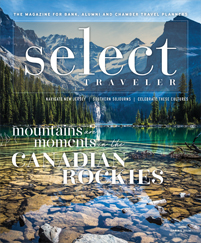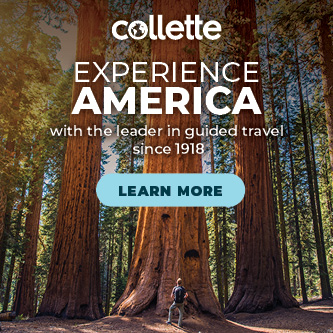If you want to expand the size and reach of your travel group, consider thinking younger — much younger.
Courting active baby boomer travelers has been a high priority of affinity travel planners for some time. But the most insightful travel planners and tour companies have gone one step further and created opportunities for boomers to hit the road with their families.
Multigenerational travel is a big business in the United States. Though we often picture couples traveling together or nuclear families going on road trips with young kids, recent research has found a growing number of people interested in exploring the world with their extended families.
A survey by AAA found that some 36 percent of travelers organized a multigenerational trip in 2014, up 4 percent from 2013. For more than a quarter of Americans, those trips included three generations: grandparents, parents and grandchildren. Fifteen percent of travelers said they would take their grandchildren on a trip without the kids’ parents tagging along.
This nationwide trend seems to echo what tourism experts have seen in recent years. While grandparent-grandchild tours have been around for some time, an increasing number of travel providers are creating and promoting trips specifically designed to appeal to multigenerational audiences.
For bank, alumni and chamber travel planners, multigenerational trips offer a number of rewarding possibilities. Group trips take the hassle out of planning travel, and some of your members who normally travel alone might jump at an opportunity to take a large family trip they don’t have to plan. These trips often create extra-special memories, which will help create additional goodwill between you and your members. And bringing family members into the travel fold is a great way to increase visibility for your organization and begin to build loyalty with young people.
A Different Set of Needs
Though the business model of a multigenerational trip may resemble the basic of any group tour, multigenerational groups can have very different needs than those of senior groups, and it’s important to account for those needs when planning a family trip.
Tour operator Tauck launched a multigenerational product line called Bridges in 2003, and manager Julia O’Brien said planners must treat family tours differently than other packaged vacations.
“There are so many ages and preferences involved, so we carefully craft tours from the ground up to engage families of all ages,” O’Brien said. “You can’t take a regular departure, flag it as family friendly and then take a group of families on the same old tour. We design them from the ground up and make sure that there are enriching activities that will make people from 8 to 80 come together as a family.”
Planners should account for the stamina and attention spans of children, both of which can be significantly lower than those of adult travelers. The length of the trip is also important: Though many retirees enjoy spending two weeks or more on a grand tour of Europe, families are often pressed for time, trying to fit vacations into breaks in the school calendar. As a result, shorter trips are more popular with families, O’Brien said, and multigenerational itineraries focus more on hitting the most significant highlights of a destination and less on giving visitors a comprehensive tour.
Nancy Schretter, founder of the Family Travel Network, said multigenerational tours also need to include a lot of flexibility and free time in order to keep family dynamics healthy.
“Everybody wants to spend time together, but it’s also important to build in time apart,” she said. “You have all of these different ages and interests. There are different mobility issues, and people will have different moods and paces. So time together and time apart allow each of the individual people involved to have what they want to do, and then come together for meals or a particular activity. You want to have opportunities where kids can be kids, teens can be teens and adults can be adults.”









